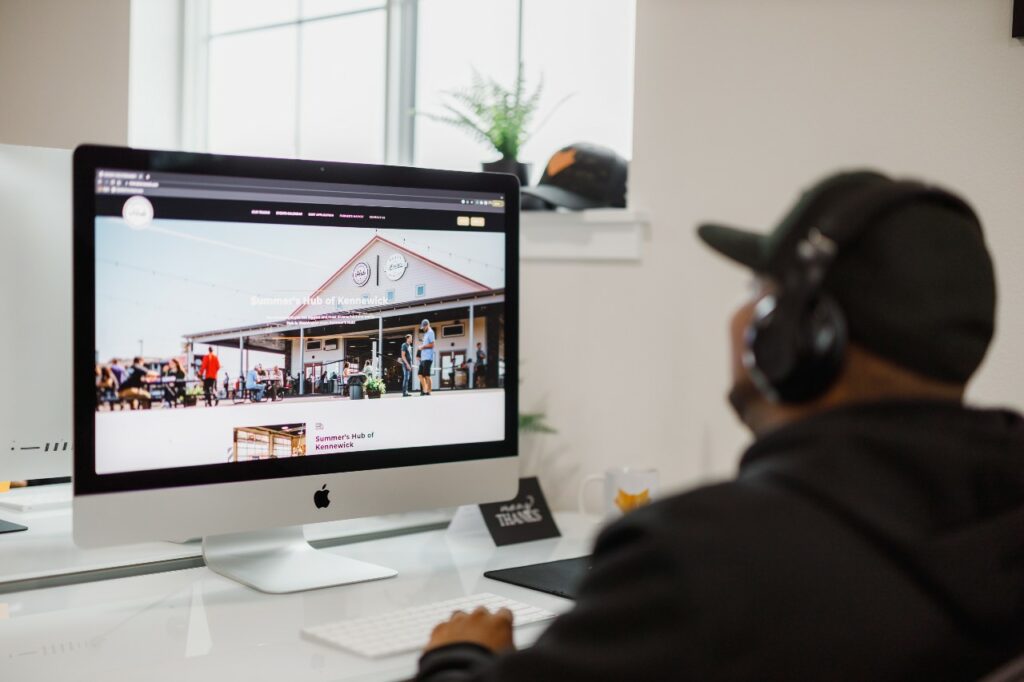Responsive website design has become one of the critical components of any popular or highly-ranked webpage. It improves how businesses interact with customers and create their digital footprint. A responsively designed page automatically reformats and adapts to the screen on which it is viewed, improving user experience automatically based on each device. It complies with Google’s complex algorithm and provides many other benefits.
6 Reasons Why Responsive Website Design is Crucial to Success

You should incorporate responsive website design into your company’s website for many reasons. Here are the top six ways responsive website design can help grow your digital footprint and the success of your business!
1. Improves Search Engine Optimization
Search engine optimization (SEO) is one of the top digital marketing techniques. Ensuring your page ranks high on search engine results pages like Google or Bing is critical to helping new or existing customers find your business. The higher you rank on the results page, the more likely you will have increased traffic to your page. Google prefers mobile-friendly websites and pages optimized for speed and efficiency. Responsive website design is integral to a holistic and effective SEO strategy.
2. Increases Your Page Flexibility
You want to keep your website up to date and make changes to entice customers to return to it periodically. Responsive website design makes initiating modifications to your page more accessible and quicker. Altering your structure or changing your content is simple with a responsive design because it formats the page for mobile and desktop versions in one adjustment rather than two different pages.
3. Your User Experience is Better
Responsive design simplifies and equalizes your user experience, no matter which type of device they use. If your page is scaled perfectly for mobile devices such as smartphones or tablets and is just as speedy on a desktop, customers will gain much more enjoyment from your site. It will help keep them on the site longer and engage with your content when they can easily navigate the pages without constantly zooming in and out.
4. You Have Higher Conversion Rates
Smartphone users have a far higher average conversion rate than desktop users. Creating a positive experience for a mobile user is becoming increasingly critical to digital success. A responsive page keeps guests browsing longer, building trust with your brand’s quality digital content. Use responsive design to ensure your browsers aren’t redirected and the users stay on your page to decrease frustrations and increase conversion rates!
5. Eliminates Duplicate Content
Without responsive design, you must build multiple website versions for users with different technologies. You must create duplicate content, which can damage your SEO rankings, as search engines find it difficult to distinguish which is relevant. If you don’t use responsive website design, you must develop different SEO strategies for each site. This can be a budget drain and take too much time – responsive design is a far simpler solution!
6. Decreases Your Bounce Rate
Your bounce rate is the percentage of visitors who leave your site after only visiting a single page. The more enjoyable your website is, the lower your bounce rate will be. Responsive website design can help! It increases the quality of your user experience, enticing them to remain longer on your website. When your website becomes easier to navigate without having to zoom in and out, users are more likely to click from page to page, which decreases your bounce rate, and subsequently improves your SEO.

4 Tips to Achieve an Effective Website Design
To create an effective website design, you must keep two elements in mind – user experience and search engine optimization. There are endless possibilities of colors to choose from, aesthetics to go with, or types of content to include. However, these choices must go hand in hand with website design practices optimized for search engine results rankings.
1. A Minimal Homepage
An excellent start is to keep your homepage minimal. A clutterless landing page helps streamline your content and direct users exactly where you want them. It helps communicate your core messages immediately and ultimately increases your bounce rate as users find it simple to navigate to other pages.
2. Optimize Your Mobile Content
Another tip is to ensure you design websites for mobile users and desktop computers. Mobile users are steadily increasing and surpassing desktop consumers in most industries. Gearing your website to mobile users is a critical step in the process.
3. Increase Your Readability
Creating simple, accessible content is vital to improving your website design. Easy-to-read website content keeps users engaged, so use recognizable words, sentences, and phrases. It will allow users to effortlessly scan your text, especially if you use type fonts and larger letter sizes.
4. Visual Hierarchy Design

A hierarchical design helps display content clearly and effectively, communicating your priorities immediately to your visitors. If you use a hierarchical structure properly, it will help users navigate easily through your website. Highlight your top assets and pages by increasing their size and weight on the page. Consider the layout of your site and element placement on the page to steer readers’ eyes in the right direction.
How Spotted Fox Can Help
Are you interested in implementing responsive website design on your company’s website? Or are you interested in improving your SEO or expanding your digital footprint? Spotted Fox Digital Marketing is here to help! We have years of experience in the digital marketing sector and work with your business goals and needs to implement the best online tools and strategies for your company. We offer responsive design services to help businesses improve their online presence, make sales, and increase conversions. Visit our website to check out our services, or contact us for responsive website design services today!
